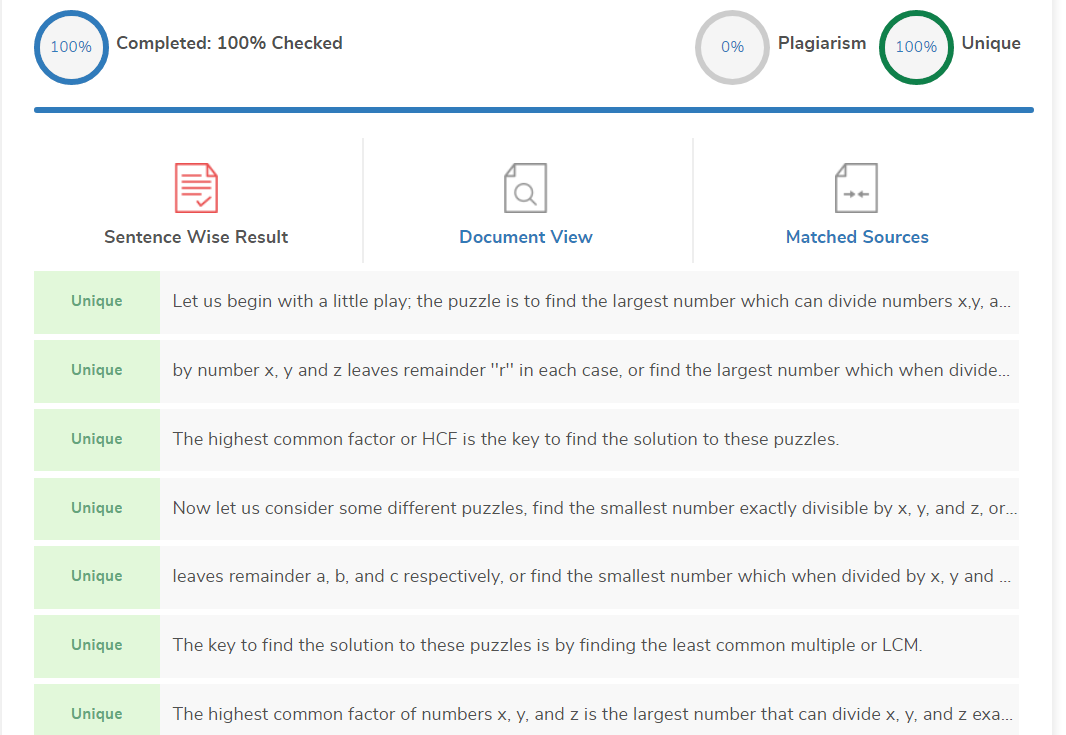An Introduction to HCF and LCM
May 06, 2021
iCrowdMarketing powered by iCrowdNewswire
Let us begin with a little play; the puzzle is to find the largest number which can divide numbers x,y, and z, or find the largest number, which when divided by number x, y and z leaves remainder ''r'' in each case, or find the largest number which when divided by x, y and z leaves remainder a, b and c respectively. The highest common factor or HCF is the key to find the solution to these puzzles.Now let us consider some different puzzles, find the smallest number exactly divisible by x, y, and z, or the smallest number which when divided by x, y, and z leaves remainder a, b, and c respectively, or find the smallest number which when divided by x, y and z is exactly divisible. The key to find the solution to these puzzles is by finding the least common multiple or LCM.
The highest common factor of numbers x, y, and z is the largest number that can divide x, y, and z exactly. There are different approaches or methods to find the highest common factor. Among the more common ways are the prime factor method and the division method.
In the prime factor method, we break the number into its prime factors and then pick the numbers common to each of the factor sets, and then multiplying those numbers together gives the highest common factor. For example, let us take two numbers, 16 and 20.
First step - Express the numbers into prime factors:
16 = 2 * 2 * 2 *2
20 = 2 * 2 * 5
Picking the prime factors, 2 * 2 = 4. So, four is the GCF of 16 and 20.
Thus, we can conclude that the HCF of all prime numbers would always be 1.
The least common multiple of numbers x, y, and z is the smallest number exactly divisible by x, y, and z. We can again use the prime factor method or division method to find LCM.
In the prime factor method, we break the number into its prime factors and then pick all the prime factors with the highest power. For example, let us take two numbers, 16 and 20.
First step - Express the numbers into prime factors:
16 = 2 * 2 * 2 *2
20 = 2 * 2 * 5
Picking the prime number with maximum power, 24 * 5 = 80. So, 80 can be said to be the LCM of 16 and 20.
From the properties of LCM and HCF, we can conclude that multiplying two numbers like x and y would have the same result as multiplying the LCM and HCF of x and y together. To find the HCF of fractions, we need to find the HCF of the numerators separately, which will be the final numerator in the resulting fraction and get the LCM of all the numbers in the denominator, which will give the final denominator in the resulting fraction. To find the LCM of fractions, we need to find the LCM of the numerators separately, which will be the final numerator in the resulting fraction and get the HCF of all the numbers in the denominator, which will give the final denominator in the resulting fraction.
Let us see an application of LCM and HCF. Consider three runners running around a circular track of 10 km circumference with speeds of 5 km/hr, 7 km/hr, and 11 km/hr. Can we tell in how much time the three athletes would meet again?
Solution: Some fundamentals first, we know that time = Distance / Speed.
So, 10/5; 10/7 and 10/11
To know the least time to meet again, we need to find the LCM of these three fractions.
So, we need to take LCM of the numerator, which in this case would be 10, and we need to take the HCF of the denominator, which would be 1. So, the time they would meet again next would be 10 hours after.
To practice more on such problems, visit Cuemath for HCF and LCM worksheets.


Tags: English